Unrecorded early California Railroad Map, one of the first printed maps to focus on the routes serviced by a single California Railroad.
The California Pacific Railroad Company was incorporated in 1865 in San Francisco as the California Pacific Rail Road Company. It was renamed the California Pacific Railroad Extension Company in the spring of 1869, then renamed the California Pacific Railroad later that same year. The railroad was constructed just months prior to the completion of the Central Pacific/Union Pacific Transcontinental Railway.
The line was originally built by D.C. Haskin. The map shows the lines of the CPRR at a very early date (based upon information depicted on the neighboring line between Healdsburg and Sonoma which was never in fact constructed), the time of the acquistion of the Napa Valley Rail Road Company (June 9, 1869) and the sale of the Railroad by Haskin to investors led by former California Governor and Senator Milton Slocum Latham (January 15, 1870). The Napa Valley R.R. is still shown as being a connection, rather than part of the CPRR. The line from Davis (Davisvilled) to Sacramento is not yet shown as completed, which did not occur until January 1870.
Railroads in Sonoma County.
The map also provides a fasciniating look at the early railroad history of Sonoma Couty. The establishment of regular railroad service in Sonoma, and specifically a line from San Francisco Bay to Healdsburg, became a significant issue in the mid 1860s. In order to spur activity, Sonoma County voters approved a subsidy of $5,000 per mile for the successful construction of the first rail line to reach Healdsburg. Over the next several years, several competitors emerged and robust if not entirely honest competition ensued.
In October 1865, C.W. Langdon of Santa Rosa, I.G. Wickersham of Petaluma, and John McMannis, of Healdsburg, organized the Petaluma & Healdsburg Railroad Company. Public opinion was divided as to what route such a railway should take. Most Sonoma County residents felt Healdsburg was a natural northern terminus, but Petaluma and Vallejo were also possibilities.
On December 26, 1867, a Petaluma investor group formed the Sonoma County Railroad Company to construct a railroad to Healdsburg, with a spur to Bloomfield (in western Sonoma County). At the same time, John Frisbie and Jackson Temple organized a rival company, which promoted a Vallejo - Sonoma- Santa Rosa route, which bypassed Petaluma completely. Yet another competitor, the San Francisco & Humboldt Bay Railroad Company, was incorporated on March 2, 1868, by Utah mine owner, General Patrick O'Conner. Fred McCrellish, publisher of the San Francisco Alta California, and John McCauley, a promoter and lobbyist, envisioned a route from Sausalito to Humboldt Bay.
On May 12, 1868, voters approved the bid of the Sonoma County Railroad, via Petaluma. The victors held a "ground breaking" ceremony on July 4, 1868, but no further construction occurred. The Petaluma group soon transferred their rights to the San Francisco & Humboldt Bay Railroad Company, which turned to Asbury Harpending of San Francisco for additional financing.
Harpending had been purchasing parcels for the extension of Montgomery Street across Market with banker William Ralston in 1868, when he was approached by Fred McCrellish for funding. Harpending bought out General O'Conner and John McCauley's interests, and became owner of 90% of the company. McCrellish was retained as a lobbyist for the project.
With visions of Congressional land grants through the Eel River Redwoods, Harpending began laying tracks. He sent O'Conner to Washington to lobby for the grants and even prepared plans for a suspension bridge across the Golden Gate. Grading proceeded north of Petaluma through the fall and winter of 1868, but by early 1869, Harpending was running short of cash. Harpending and Ralston held a disastrous auction of the Montgomery Street lands. Setting the minimum bid too high, the land went to shills that had been planted by the owners. A few days later construction of the railroad in Sonoma County came to a halt. Harpending reorganized as the San Francisco & North Pacific Railroad, but later sold to Peter Donahue, owner of the San Francisco & San Jose Railroad (SFNP) in June 1870.
A few days before Harpending sold his interests to Donahue, Sonoma County voters had agreed to a subsidy of $5,000 per mile to the first railroad company to complete 10 miles of track, also agreeing to issue $25,000 in bonds to the California Pacific Railroad (which had already laid 163 miles of track in northern California) upon the completion of the first 5 miles from the Napa County line. The subsidy provided that if the SFNP completed a railway through the County first, no bonds would be issued to the California Pacific.
The SFNP and California Pacific worked feverishly to meet the deadline and progress on the line continued. Regular service between Petaluma and Santa Rosa began October 31, 1870. Nevertheless, the owners of the California Pacific pressed onward. A heated race ensued, which only ended when Donahue was convinced by William Ralston, to sell out to former California Governor Milton Slocumb Latham, owner of the California Pacific. The SFNP became the Petaluma & Humboldt division of the California Pacific.
By July 1, 1871, Latham's line was open to Healdsburg. Latham in turn sold the California Pacific line to the Central Pacific in September, 1871. In a rush to complete the line and win the County subsidy by the June 21, 1872 deadline, the Central Pacific opened passenger service to Cloverdale on March 15, 1872.
Ironically, the Central Pacific soon decided that the Sonoma County line would not figure in its long range plans. In January, 1873 the line was sold back to Peter Donahue.
Variant California Pacific Railroad Maps
We are aware of two different maps of similar size and appearance covering the California Pacific Railroad, of which this appears to be the earliest. We note a very similar map by Britton & Rey, which shows completed versions of several of the rail lines shown here as under construction. There are several other differences which suggest that this is the earlier of the two maps.
Guilcos Rancho
The map locates Guilcos Ranco, east of Santa Rosa. Rancho Los Guilcos was a four square league grantmade to Captain John Wilson (1797 - 1861), a Scottish-born sea captain and trader, who came to California in 1830. Wilson and his business partner, James Scott (-1851), also owned Rancho El Chorro and Rancho Cañada de los Osos y Pecho y Islay in San Luis Obispo County. In 1845, Wilson moved his family from San Luis Obispo to Rancho Cañada de los Osos & Pacheco y Islay, built an adobe home and lived there until his death in 1860. After the Treaty of Guadalupe Hidalgo, a Land Act of 1851 a claim for Rancho Los Guilicos was filed with the Public Land Commission in 1852 and the grant was patented to John Wilson in 1886.
Wilson never occupied Rancho Los Guilicos, and in 1849, sold the rancho to merchants William Hood and William Pettit. Scotsman William Hood (1818-) had come to California to join the California Gold Rush. Hood, for whom Hood Mountain is named, quickly bought Pettit's and became the owner of the entire rancho. Unfortunately, Hood could not pay his debts on the land and he sold it in 1893.
In 1849, William Hudson (1813-1866 ) and his brother Martin Hudson (1807-1871), from Virginia, bought 2,500 acres (10 km2) and engaged in raising wheat and stock. Irishman Captain John Hamilton Drummond (1830-1889), who served in the British army, came to California in 1877, and purchased part of the rancho and engaged in sheep raising and viticulture. In 1890, the Drummond Ranch was purchased by Mary Ellen Pleasant.
U.S. Senator Thomas Kearns of Utah bought the property in 1905 and added other property's to increase the size to 1,800 acres. Kearns entertained his friend President Theodore Roosevelt and used the property as an investment and vacation property until just before his death in 1918.

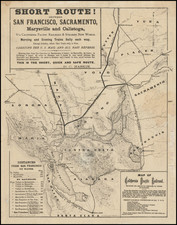








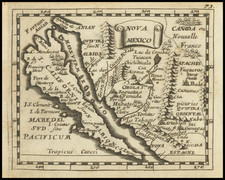
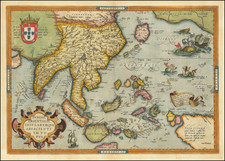
![[California in Miniature] Bird's-Eye View Map Showing Its Prominent Topographical Features, Location of Principal Cities, Towns and Points of Note, Also Lines of the Southern Pacific Company. 1898.](https://storage.googleapis.com/raremaps/img/small/63460.jpg)
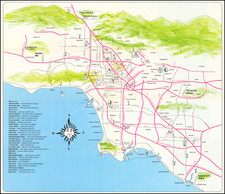
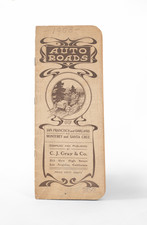
![[The 5 Californias] Carte de la Californie Suivant 1. La Carte manuscrite de l'Amerique de Mathieu Neron Pecci olen dressee a Florence en 1604, 2. Sanson 1656 . . .](https://storage.googleapis.com/raremaps/img/small/97983.jpg)